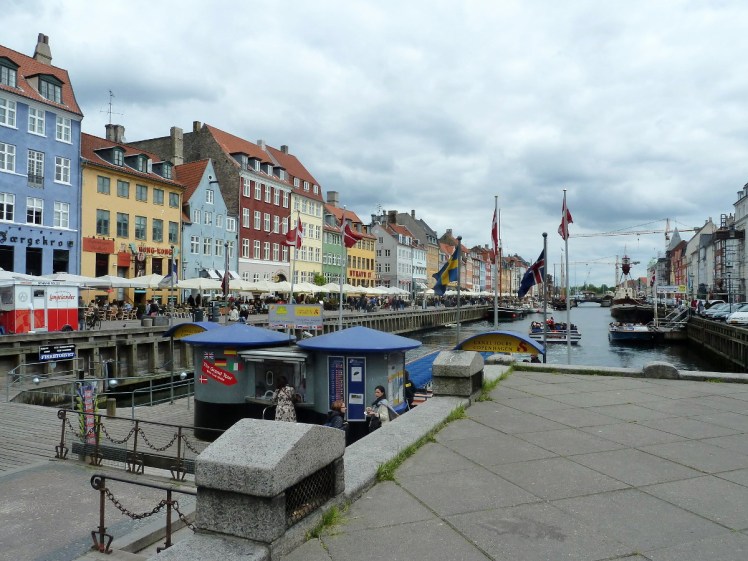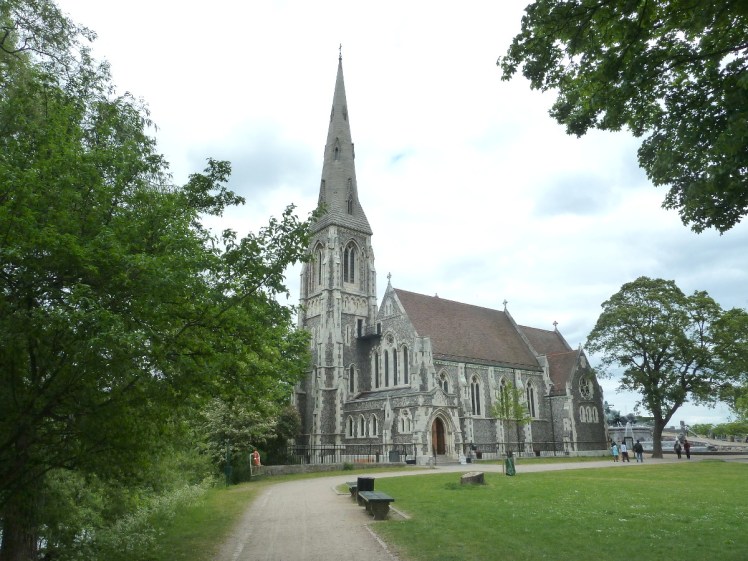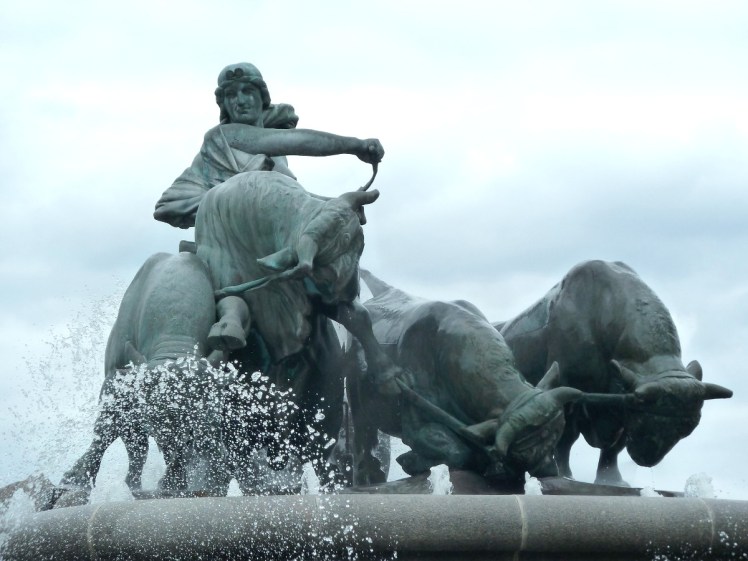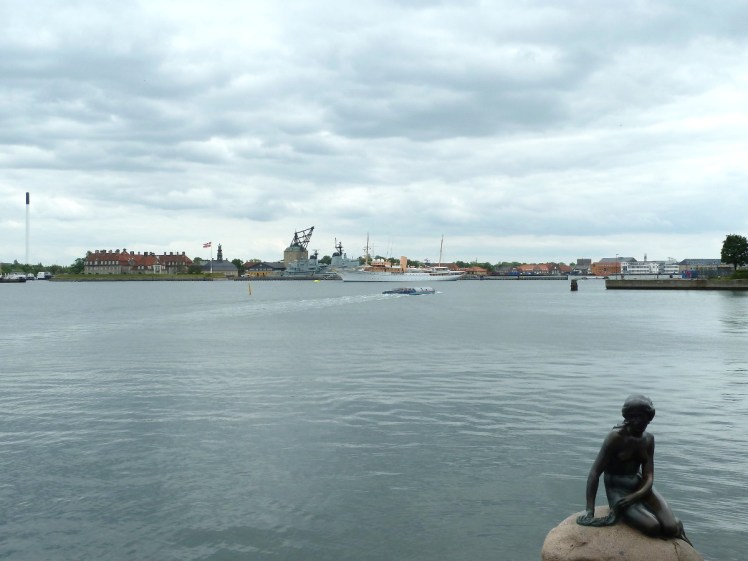I’ve tried writing about my mini backpacking trip to Copenhagen, Odense & Aalborg before and somehow it just won’t come out right. So I’m going to have another go. Consider this part one of a trilogy covering my 6 day epic adventure. Welcome to Copenhagen.
It was 2012 and Her Majesty was having an extra bank holiday in June for her Diamond Jubilee. That meant I could have six days away for the price of two days’ holiday from work. I’d painted my nails in Avengers theme colours – I vividly remember this because the silver, red and bright blue I had on half my nails to represent Captain American looked a lot like I’d painted them in honour of the big royal party back home. Don’t look at the Loki green, gold and black on my other fingers. I don’t have any photos and it’s not really a relevant detail but you know, it’s something I remember.
I’m still not 100% sure what the actual definition of backpacking is but I had a 45 litre backpack, a handful of train tickets and a flight that brought me home from a city that wasn’t the one I’d landed in. Of course, backpacking is usually longer than six days and usually somewhere a bit less… well, Danish but it fulfilled Wikipedia’s definition of “a form of low-cost independent travel, often staying in inexpensive lodgings and carrying all necessary possessions in a backpack”. I’d be staying in hotels rather than hostels because I’m unsociable and hate sharing a room but they were pretty cheap by Danish standards and I’d be travelling around independently.

Anyway, I went off pretty early, 08:45 from Gatwick, which meant a night spent in a purple-lit pod under South Terminal. At this point, I’d recently discovered Iceland and I’d brought the Prose Edda to read on the plane – this idle details actually will become relevant. I took the train from Copenhagen Airport into the city centre with my small backpack and went off to find my hotel. It was the cheapest one within a ten minute walk of the station (I now know that “close to the station”, while convenient, is not generally a convivial district) and I was a little startled to find gold sequins over the door and even more surprised, considering the price, to have a pretty palatial room.

So, what do you do when you first arrive in Copenhagen and haven’t really done the reading? I went looking for the Little Mermaid, of course. The first thing of interest I found along the route, other than my first statue of Hans Christian Andersen, was Nyhavn. It barely registered. I hadn’t done any reading at all. I recognised that it was pretty but as I walked along, I spied cafes and restaurants with outside seating and the seats had blankets on them. I now know that’s pretty common but it was the first time I’d ever noticed it and I took more notice of the blankets than of the beautifully Danish harbourside.

Next came a giant sandcastle exhibit, which I presume was temporary, and then the open courtyard of Amalienborg, four palaces arranged around a courtyard and home to the Danish royal family, patrolled by soldiers who looked very much like Buckingham Palace’s guards, complete with ludicrous bearskins, only they were wearing blue trousers. It felt very weird to just walk into the courtyard of the Danish royal residence. No gates, no crowds, no ceremonial rifles being put to use on the intruder who’d ambled in.


And then I walked through Churchilparken where I found lots of weird statues – a naked man on a horse that looked like it was trying to gallop through a wind tunnel, a man who looked like he was drying himself after a bath, a stone Anglican church that should have been in an English village, and a particular fountain.


This was the fountain of Gefion. I was eating Polos at the time – another irrelevant detail – and at the sight of this fountain, I choked on the little crunched-up pieces of mint. I recognised this fountain! A tall woman driving four oxen – I knew her!
King Gylfi ruled over the lands now called Sweden. It is said that he offered a travelling woman, in return for the pleasure of her company, a piece of ploughland in his kingdom as large as four oxen could plough in a day and a night. But this woman, named Gefjun, was of the Æsir. She took four oxen from Jutunheim in the north. They were her own sons by a giant, and she yoked them to the plough, which dug so hard and so deep that it cut the land loose. The oxen dragged this land westward out to sea, stopping finally at a certain channel. There Gefjun fastened the land and gave it the name Sjaelland.
The Prose Edda, Snorri Sturluson
Danish’s Sjaelland became English’s Zealand, the large island Copenhagen sits on. I’d read Gefion’s story in the Prose Edda on the plane that very morning and there was her fountain right in front of me. This is the thing about reading Norse literature on your way to Norse countries – sometimes it steps right out of the book and appears in front of you.


Anyone who’s seen the Little Mermaid will understand when I say that Gefion made a much bigger impression on me. The mermaid is small and sits on a rock and there aren’t many convenient angles to photograph her from, and of course she’s perpetually surrounded by a crowd. So I headed inland to the more interesting star-shaped Kastellet fortress.

This reminded me a lot of Helsinki’s Suomenlinna. It’s a fortress and a military installation but it’s primarily a public park and open air museum. It was peaceful, it was green and it had a windmill. In fact, that windmill allegedly supplied flour to Empress Consort Maria Feodorovna of Russia, mother of Tsar Nicholas II who was assassinated in Ekaterinburg. There were swans in the moat and I was delighted to see cygnets – the ugly ducklings of another Andersen story. So this was a city where mythology appeared in front of me and also relatively modern literature.


The next day, I walked along The Lakes, three rectangular lakes that I’d taken to be the remains of a canal. In fact, it was originally one long stream which supplied water for mills. Then they became part of Copenhagen’s fortifications and later, reservoirs. Now they’re just a kind of city park. Most of my pictures of my amble are of waterfowl – more “ugly ducklings” and then some real ducklings – or yarnbombing. I don’t think I’d ever seen yarnbombing before Denmark.


In the afternoon I went to the Botanical Gardens, which I remember as being a really long walk home but the map says they’re just a short walk off the Lakes. It was rainy and the greenhouses were both dry and warm – well, they were hugely humid and damp but at least it wasn’t raining in there. I glanced at Rosenborg Slot, opposite, but I don’t think I went in. I think by then I was tired and cold.

And that was it for Copenhagen. The next morning I had a quick run through some nearby gardens in the rain and then got on the train with my backpack to the next stage of my adventure. In hindsight, I really should have gone into the Tivoli and ventured out to Christiania and I really should have appreciated Nyhavn more. But somehow, I didn’t love Copenhagen. Or maybe I just liked all the other places so much more.

Not being able to travel this year, I keep making mental notes like “why haven’t you been here?”. So right now I’m adding a return to Copenhagen followed by a few days elsewhere in Denmark to my travel to-do list. I’ve added “railway trip across Germany, Czechia, Slovakia and Hungary” to that list today and Croatia’s been on it for a while but while there’s a plague raging, I’m not going anywhere. However, for the first time this year, I’m anticipating some new material so part two of the Denmark series is scheduled for about ten days’ time. Pop back on the 21st for more chilled Danish content.